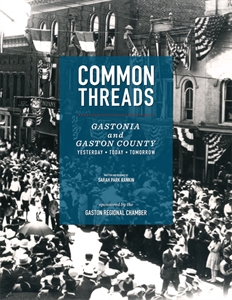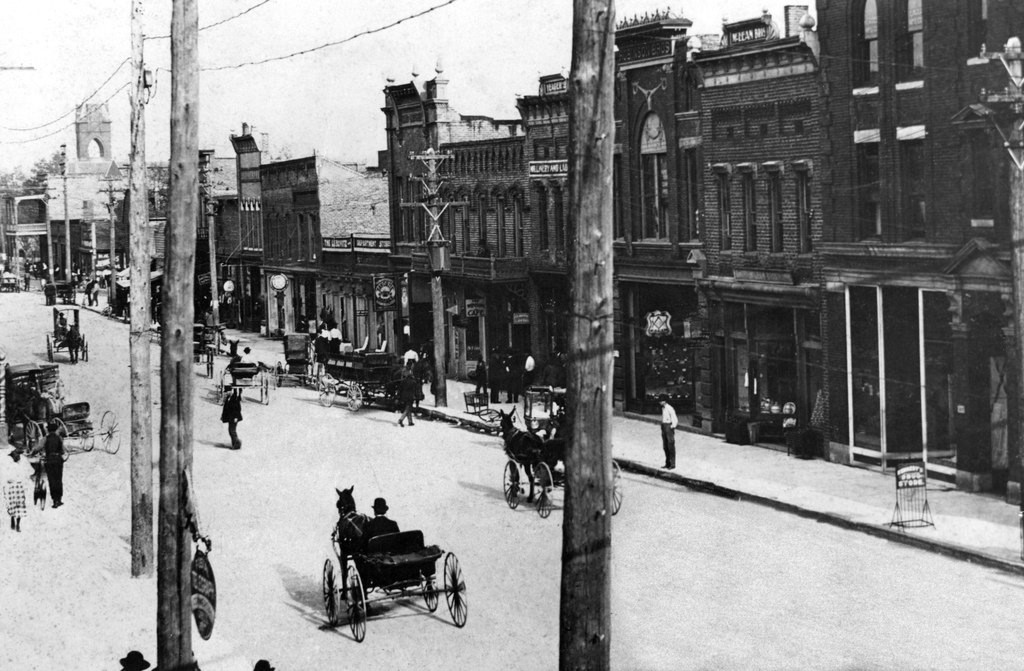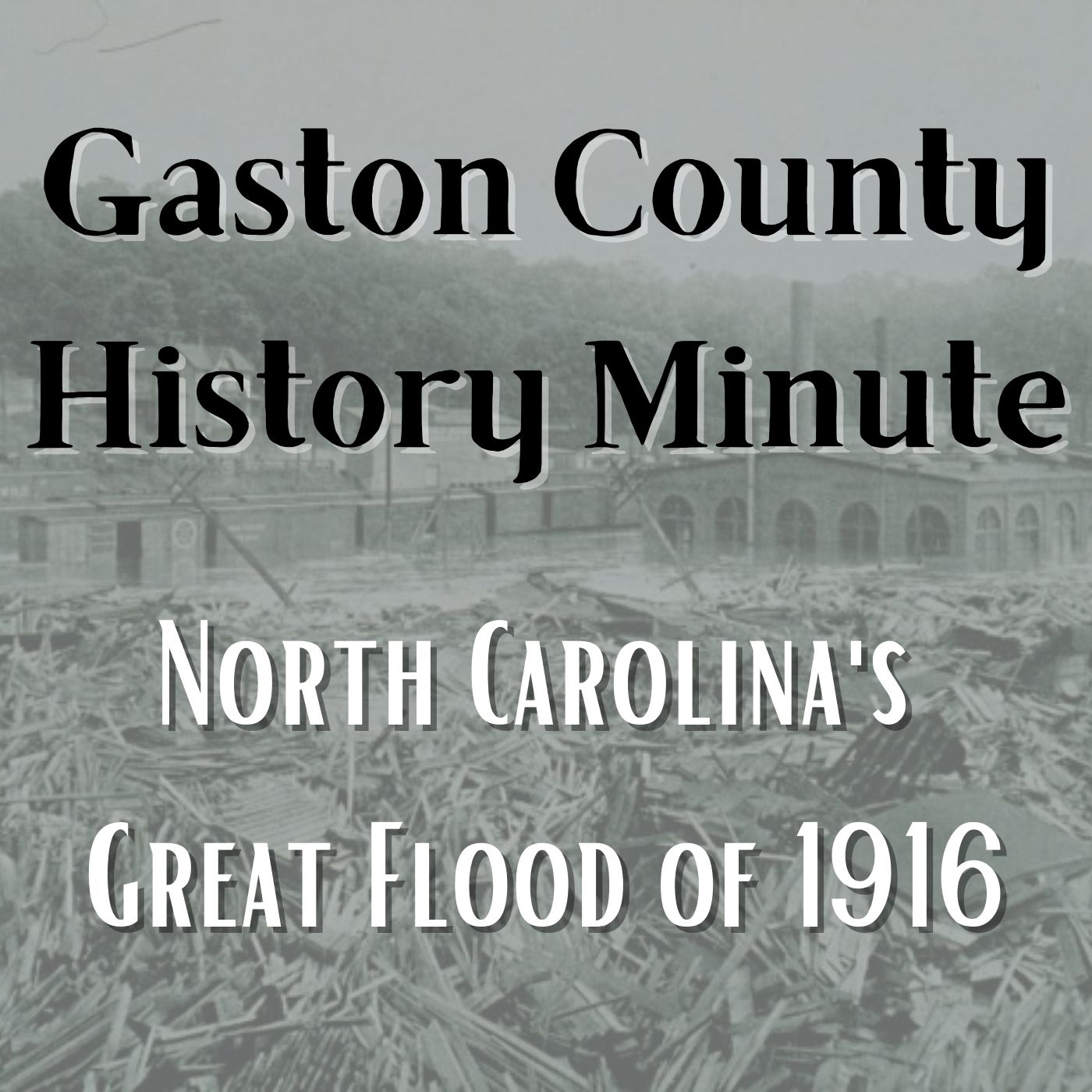Celebrating 140 Years Gastonia, North Carolina: Gastonia
Celebrating 140 Years Gastonia, North Carolina

H. Lee Waters Film Collection
-
Gastonia
 Silent films documenting communities in North Carolina, Virginia, and South Carolina, from 1936 to 1942. [Duke University Libraries Digital Collections]
Silent films documenting communities in North Carolina, Virginia, and South Carolina, from 1936 to 1942. [Duke University Libraries Digital Collections]
Books!
-
Gastonia and Gaston County by
Call Number: 975.677 AHE N.C.ISBN: 0738506737Publication Date: 2001-08-06 -
-
-
Gastonia, North Carolina by
Call Number: 975.677 MORISBN: 9781249224853Publication Date: 2012-08-01 -
 Mill Mother's Lament [sound recording] -- songs
by
Call Number: FOLK WIGGINS CDPublication Date: 2015
Mill Mother's Lament [sound recording] -- songs
by
Call Number: FOLK WIGGINS CDPublication Date: 2015 -
Professional Baseball in North Carolina by
Call Number: 796.357 HOLISBN: 0786425539Publication Date: 2006-01-16 -
 Gaston County Memories : the early years
by
Call Number: 975.677 GASISBN: 9781597256902Publication Date: 2016
Gaston County Memories : the early years
by
Call Number: 975.677 GASISBN: 9781597256902Publication Date: 2016 -
 Common threads : Gastonia and Gaston County Yesterday - Today - Tomorrow
by
Call Number: 975.677 RAN N.C.ISBN: 9780991353446Publication Date: 2014
Common threads : Gastonia and Gaston County Yesterday - Today - Tomorrow
by
Call Number: 975.677 RAN N.C.ISBN: 9780991353446Publication Date: 2014
Subject Guide
In the News
-
City of Gastonia’s 141st birthday – historical photo gallery
 from City News Source - Official City of Gastonia News & Information
from City News Source - Official City of Gastonia News & Information
Gastonia
See Topoquest map.
See current census information.
Official city website.
Gastonia began as a stop known as Gastonia Station on the track constructed by the Atlanta & Richmond Airline Railroad (later the Atlanta & Charlotte Air Line) in the early 1870s. The depot served as a stopping point for trains to take on water and there was a hotel. In 1876 the Chester & Lenoir Narrow Gauge Railroad (later the Carolinas & North Western) built a line crossing the one at Gastonia, thus increasing the spot's importance as a transportation junction. When the first train came through on March 31, 1873, a new store had been added to the local buildings. However, sometime in 1875 or 1876, the depot was moved about a mile westward to what became the present day city of Gastonia.
Gastonia was incorporated as a town by the North Carolina General Assembly on January 26, 1877. The town, which centered on the spot where the railroad lines crossed, was one mile square and had an estimated population of 140. The first mayor was R. E. Waddill. Oliver Davis, the only policeman, thus became the first chief of police. In 1890 Branson's Business Directory of North Carolina mentioned Gastonia as a post office with a population of 236 and listed many local businesses. In 1909, by popular vote, Gastonia replaced Dallas as the county seat.
Gaston County and Gastonia became an important textile manufacturing area. Gastonia's prominence began with the founding of the Gastonia Cotton Manufacturing Company in 1877. This was a steam powered mill; steam power let mills move away from the rivers. By 1900 there were five mills. Then a new mill was built, Loray Mill, the largest textile mill under one roof in the South. In 1904 the Gray Manufacturing Company built the county's first mill powered by electricity. By 1923 the county had 103 mills and was the national leader in combed cotton production. In 1929 a strike at the Loray Mill attracted world wide attention and became perhaps the best know event in the city's history. (See our research guide: Textile History of Gaston County.)
Gastonia population:
- 1880 -- 236; 1890 -- 1,033; 1900 -- 4,610;
- 1910 -- 5,759; 1920 -- 12,871; 1930 -- 17,093;
- 1940 -- 21,313; 1950 -- 23,069; 1960 -- 37,276;
- 1970 -- 47,322; 1980 -- 47,333; 1990 -- 54,724;
- 2000 -- 66,277; 2010 -- 71,741.
In Gastonia: Schiele Museum of Natural History; Loray Mill, 300 S. Firestone St., and Historic District; Downtown Historic District; American Military Museum (Memorial Hall); City of Gastonia parks; Lineberger Park and miniature train; George Poston Park; South Fork River Park.
Gastonia History Resources:
-
- History of Gastonia and Gaston County, by Robert Allison Ragan (pub. 2010), call #: 975.677 Rag NCC.
List of Gastonia mayors, p. 641. - National Register Multiple Property Documentation for the Works of Hugh Edward White and White, Streeter, and Chamberlain, (pub. 2005), call #: 720.975 Nat NCC.
- Downtown Gastonia Historic District National Register application [pdf].
- Loray Mill Historic District article.
- A Glimpse As It Passed: Scenes from a Vanished Gastonia, North Carolina, 1972-1992, by Timothy Craig Ellis (pub. 2004), call #: 975.677 Ell NCC.
- Gastonia and Gaston County, North Carolina (Images of America), by Piper Peters Aheron, (pub. 2001), call #: 975.677 Ahe N.CC.
- Gastonia Centennial, 1877 - 1977, Commemorative Book, (pub. 1977), call #: 975.677 Gas NCC.
- Gastonia and Gaston County, North Carolina, 1846-1949 by Joseph Separk, (pub. <1950>), call #: 975.677 Sep NCC with a separate index.
- Illustrated Handbook of Gastonia, N. C., published under the Auspices of the Gastonia Commercial Club, edited byJoseph H. Separk, (pub. 1906), call #: 975.677 Sep NCC.
- "The South's City of Spindles, " The State, v. 16, no. 27, Dec. 4, 1948, p. 18-29 [051Sta NCC]. A series of article describing Gastonia and its industries.
- Gastonia Gazette, 6 June 1895, p. 3. "The Number is 2,313." The 1895 census of Gastonia. Population, education, and church membership. The Gaston Gazette is available on microfilm from 1880 - current, and indexed starting in 1998.
- History of Gastonia and Gaston County, by Robert Allison Ragan (pub. 2010), call #: 975.677 Rag NCC.
- For a detailed list of city directories, see our guide City Directories.
- Gastonia has a mayor and council government. The library has City Council minutes since 1981; ask at the Reference Desk, Main Library. Recent minutes are online on the City Council site.
- A Gastonia map dating back to 1895.
Some Trivia
-
When and where was the first airstrip in Gastonia?
 "Where We Used to Take Flight" June 28, 2015, 1B. Online, read "Locals share memories of first airstrip to operate in Gaston" from the Gaston Gazette, June 27, 2015, to find out!
"Where We Used to Take Flight" June 28, 2015, 1B. Online, read "Locals share memories of first airstrip to operate in Gaston" from the Gaston Gazette, June 27, 2015, to find out!
Gaston History Minutes
Some Notable Gastonians
-
NCpedia - Biographies - Gaston County
 Notable people associated with Gaston County's history, including Governor Robert Gregg Cherry, Orishatukeh Faduma, Nancy Hanks (Lincoln), George Washington Ragan, Ella May Wiggins, and more.
Notable people associated with Gaston County's history, including Governor Robert Gregg Cherry, Orishatukeh Faduma, Nancy Hanks (Lincoln), George Washington Ragan, Ella May Wiggins, and more.
-
Walls That Speak by
Call Number: 759.13 THEISBN: 9781574412895Publication Date: 2010-11-15The mural art of John Thomas Biggers, born April 13, 1924, Gastonia, NC. -
Fight! Fight! by
Call Number: 926.16 HatchellISBN: 9780996267557Publication Date: 2016-04-03Sylvia Hatchell, born February 28, 1952 in Gastonia, NC, is the head coach of the women's basketball team at the University of North Carolina at Chapel Hill. Details her personal battle and fight with cancer. -
Public addresses and papers of Robert Gregg Cherry : Governor of North Carolina, 1945-1949. byCall Number: 353.9756 CHE N.C.C.Publication Date: 1951North Carolina Collection. Non-circulating.
-
James Worthy Scrapbook byCall Number: 927.9632 Worthy NCCPublication Date: 1976-1985.North Carolina Collection, 8 volumes, non-circulating.
-
Crash Davis (Wikipedia)"Lawrence Columbus "Crash" Davis (July 14, 1919 – August 31, 2001) was an American professional baseball player whose name inspired that of the main character of the 1988 movie Bull Durham. Born in Canon, Georgia, and raised in Gastonia, North Carolina, Davis earned the nickname "Crash" at age 14 when he collided with a teammate when chasing down a fly ball."
-
"Sleepy" Floyd (Wikipedia)"Born in Gastonia, North Carolina, [Eric Augustus] Floyd received the nickname "Sleepy" playing baseball in the fourth grade, when a spectator yelled "Get that kid out of the game. He’s sleeping.""
-
Martyr of Loray Mill by
Call Number: 331.76 HOR N.C.ISBN: 9780786499649Publication Date: 2015-06-26Ella May Wiggins
-
Wiley Cash, authorGastonia native, Wiley Cash is the New York Times best selling author of the novels The Last Ballad, A Land More Kind Than Home, and This Dark Road to Mercy.
Other Helpful Guides
-
Nursing History: a research guideLearn more about the history of nursing in Gaston County.
MORE TRIVIA!
 When did the Gastonia Gazette become the Gaston Gazette?
When did the Gastonia Gazette become the Gaston Gazette?

CITATION
TITLE: Celebrating 140 Years: Gastonia, North Carolina
AUTHOR: Gaston County Public Library
URL: http://gastonlibrary.libguides.com/gaston-history-cities-towns/gastonia140th
UPDATED: 15 July 2020


